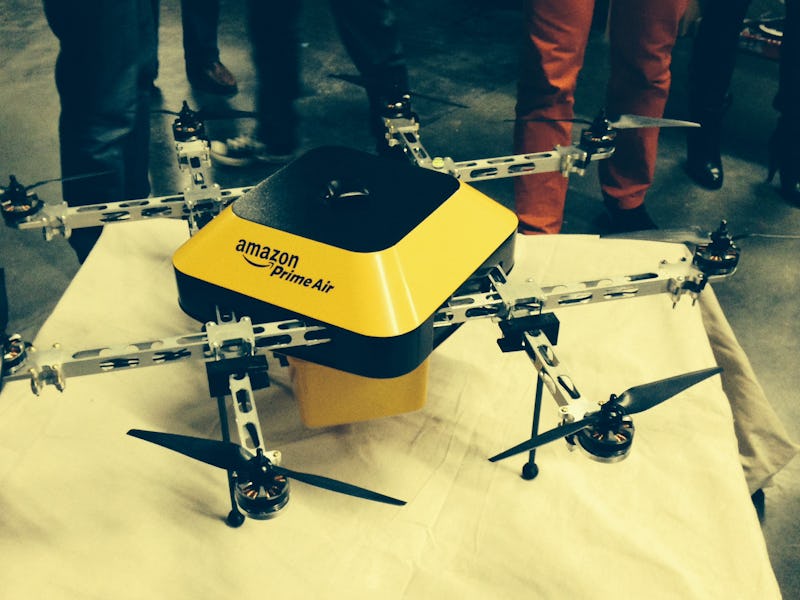How Fast Can Amazon's Delivery Quadcopters Possibly Get?
The truth is that aircraft with up-down oriented rotors can only be so fast. The future of shipping may be coming, but it's going to take a while to get here.

In the version of the future where Jeff Bezos always wins (not as implausible as it sounds), Black Friday will become Amazon Drone Friday, and the buzz of quadcopters will drown out the roar of college football fans. But, in order for this to make any sense at all, civilian drone are going to have to get a lot faster. In its request to the Federal Aviation Administration to get an exemption to test delivery drones, Amazon asked if it could get permission to carry 5-pound payloads while traveling over 50 mph. The retailer didn’t state the upper bounds of how quickly it might eventually fly and our inquiries went unanswered.
The question isn’t whether or not Amazon can make a quadcopter capable of going faster than 50 mph, but how fast they can make a quadcopter capable of carrying a proportionally significant payload?
The thing about prop-driven aircraft is they sacrifice speed for agility. Top-of-the-line, piloted helicopters max out under 500 mph and we won’t see a quadcopter hitting the speed of sound (767 mph in lab conditions). Jet engines conquered supersonic speeds in the 1940s, but there are no propellers on the fastest unmanned aircrafts. For instance, the experimental Falcon Hypersonic Technology Vehicle 2, a DARPA and Lockheed Martin joint, is essentially a controllable rocket. It can hit Mach 20, but the chances of it getting a package anywhere in one piece are basically nil. On a test run it managed to rip its own skin off.
Amazon has embraced rotors for a reason.
When the FAA approved the Amazon drone exemption in April, it cleared the air, legislatively at least, by putting a 100 mph ceiling on the books and dictating that drones stay within the line-of-sight of their operators at all times. If operators are on the ground (and there’s nothing in the way) that’s a distance of 2.9 miles to the horizon, traversable in 1.74 minutes at top permissible speeds. It’s faster than the UPS truck, but by no means mind-boggling.
Is 100 mph reasonable for a drone? Earlier in November, a thermoplastic resin drone claimed the record for fastest 3D-printed object at the Dubai Airshow, with 150 mph. It was jet-powered, however, meaning Amazon couldn’t legally best it even if the speed limit changed.
Record speeds with spinning blades isn’t definitive, but for a strong contender, look no further than the Warpquad. Well, look quickly, and then up in awe as it darts to the sky. The guy flying it — who goes by Warthox — has hit quadcopter speeds of 86 mph, according to Discover magazine. It’s impressive, but it would still lose to a 1998 Honda Civic in a drag race.
The answer to the question of speed isn’t a big number, it’s innovation or legislative flexibility. Jet-propelled drones could be very fast, but quadcopters won’t get much quicker until we reimagine how they fly.